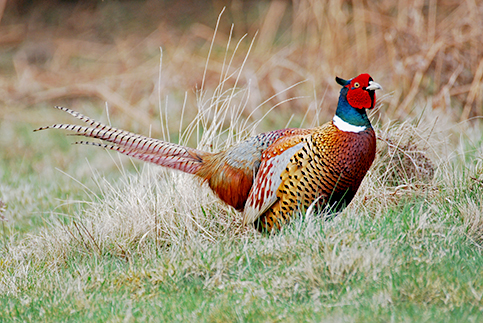Pheasant season opens this Saturday
Drought conditions likely to affect numbers
It is a Kansas tradition to open pheasant and quail season on the second Saturday in November. If you are a bird hunter, you have been waiting for this day for a long time! The Kansas pheasant and quail seasons are November 12th, 2022 to January 31st, 2023.
Year in, year out, Kansas ranks among the top states in the nation for harvest of pheasant and bobwhite quail. Pre-season reports predict that drought conditions are likely to affect this year’s bird numbers with the following forecast presented by the Kansas Wildlife and Park Department.
2022 Upland Bird Forecast
Pheasant: Drought conditions intensified in Kansas over the past year and had a marked impact on pheasant production across much of their primary range. This was most noticeable in the High Plains region of the western third of the state where there were widespread declines. In portions of the North Central Smoky Hills region, spring precipitation was enough to select areas to support a strong initial nesting attempt resulting in an overall increase for the region. However, this was not widespread and was not enough to offset losses in other regions.
The statewide pheasant index has dropped to levels similar to the previous drought cycle. These declines will be exacerbated by the loss of huntable habitat as the CRP program has continued to decline in enrollment and drought conditions opened much of the remaining CRP to be used for emergency forage for cattle across the entire Kansas pheasant range. This has the potential to artificially improve hunter success initially by concentrating birds in the remaining cover, but will also likely concentrate hunting pressure. Despite declines, Kansas continued to maintain one of the best pheasant populations in the country and fall harvest will again be among the leading states. Simply note, hunters are likely to find challenging conditions and should be prepared to work for birds this season, though the north central region showed an increase on the roadside survey index, boasting the highest roadside density this year. The region maintained the highest regional harvest last year as well. Hunters should target remaining cover in areas where good spring cover should have been present, especially in the western and southern portions of this region where the highest roadside densities were this year.
Quail: Kansas has continued to support above-average quail population with spring densities remaining similar to 2021. This included significant increases in spring densities in the central regions of the state this spring. Drought conditions will impact huntable cover throughout the range and will likely be more noticeable as hunters travel further west in the state. The best opportunities will be in the Flint Hills and Smoky Hills regions with quality hunting opportunity scattered across the remaining regions.
Prairie Chicken:
Hunting in the north central region should remain good with the best opportunities to be found in the central portion of the Smoky Hills region, with several other areas supporting huntable densities of birds in appropriate habitat as well. The southwestern portion of the Smoky Hills region is within the closed zone. The Southwest Prairie Chicken Unit, where lesser prairie chickens are found, will remain closed to hunting this year. Greater prairie chickens may be harvested with a two-bird daily bag limit in the Great Prairie Chicken Unit. All prairie chicken hunters are required to have a Prairie Chicken Permit, which allows KDWP to track hunter activity and harvest for better information management.



